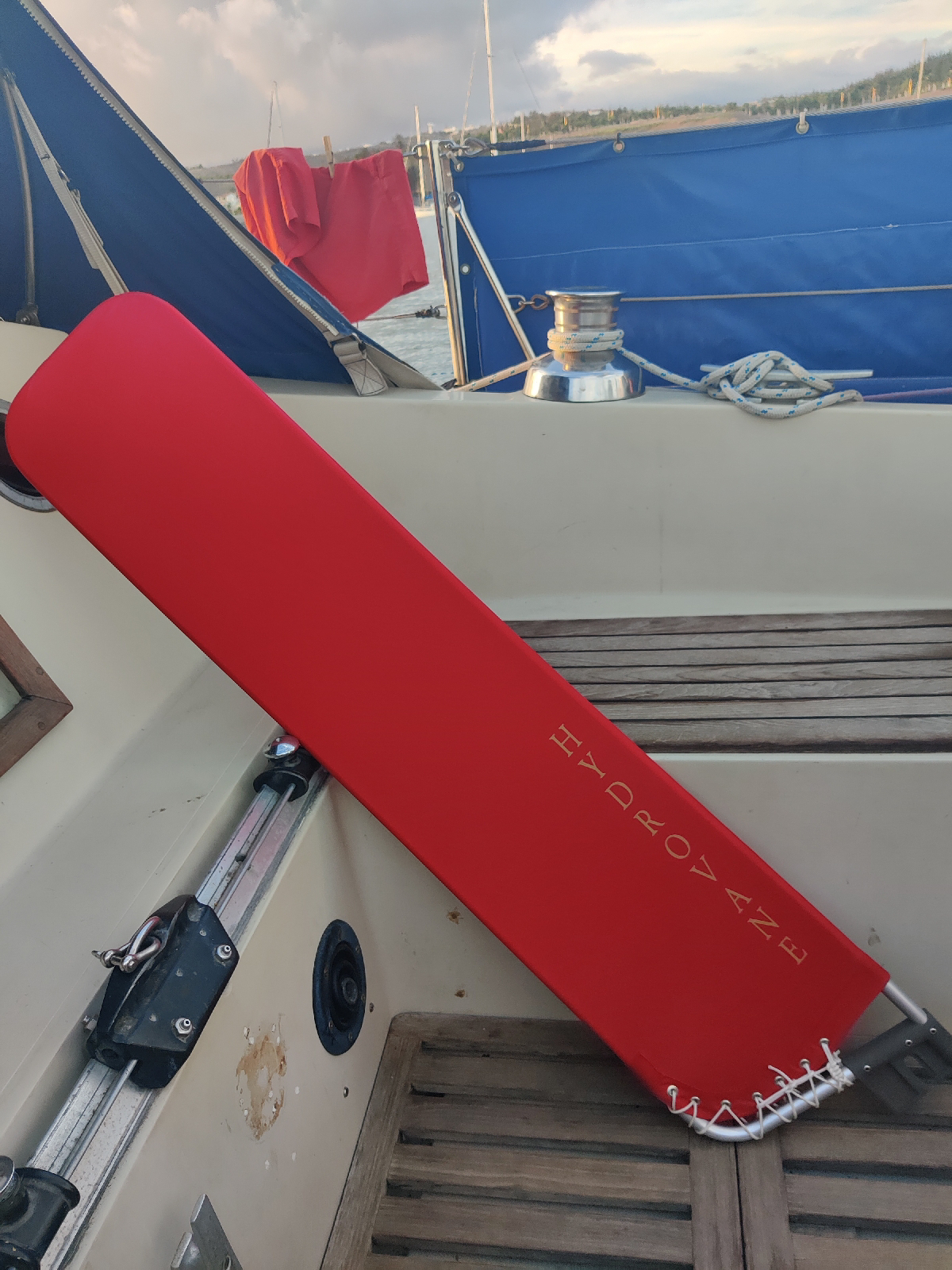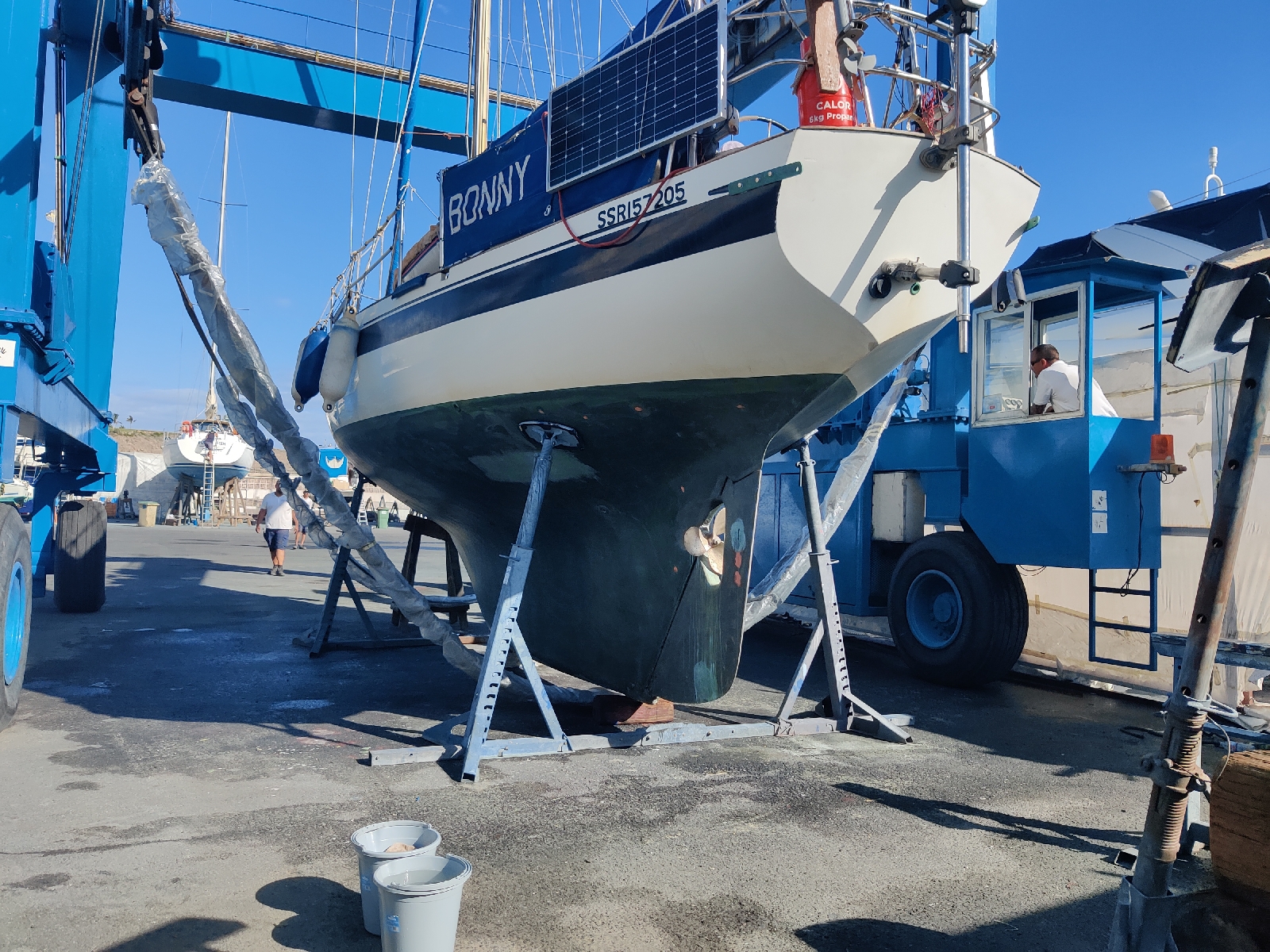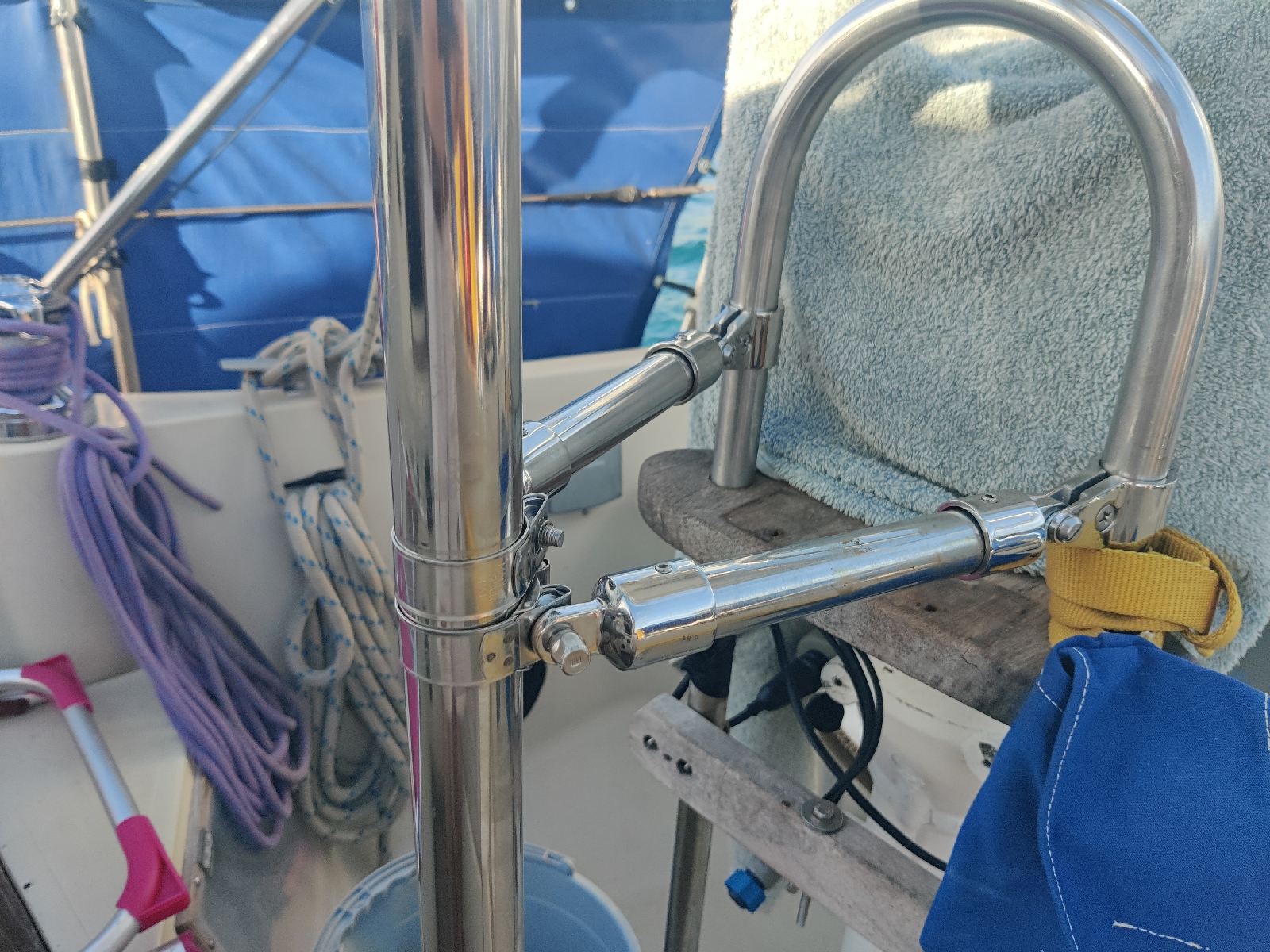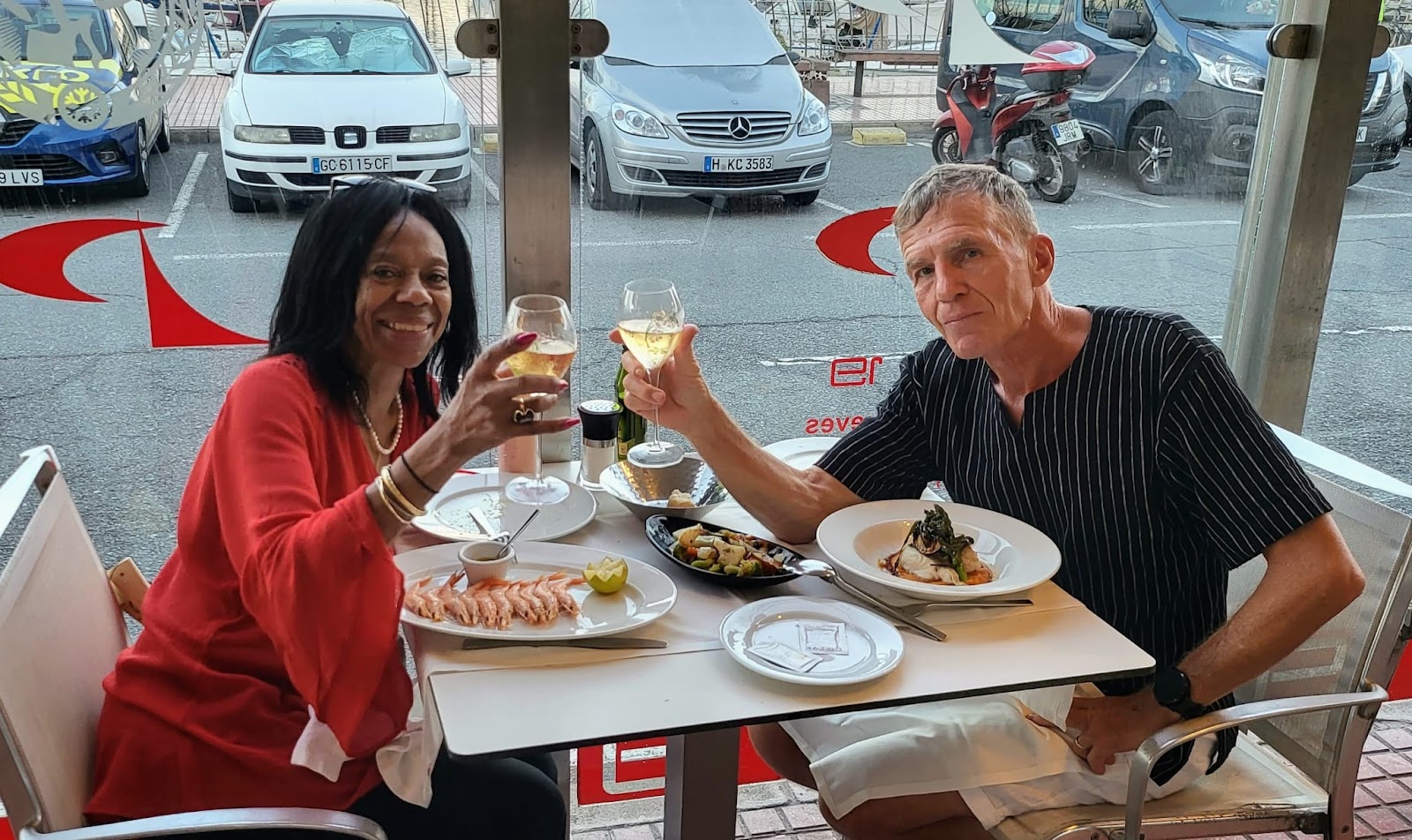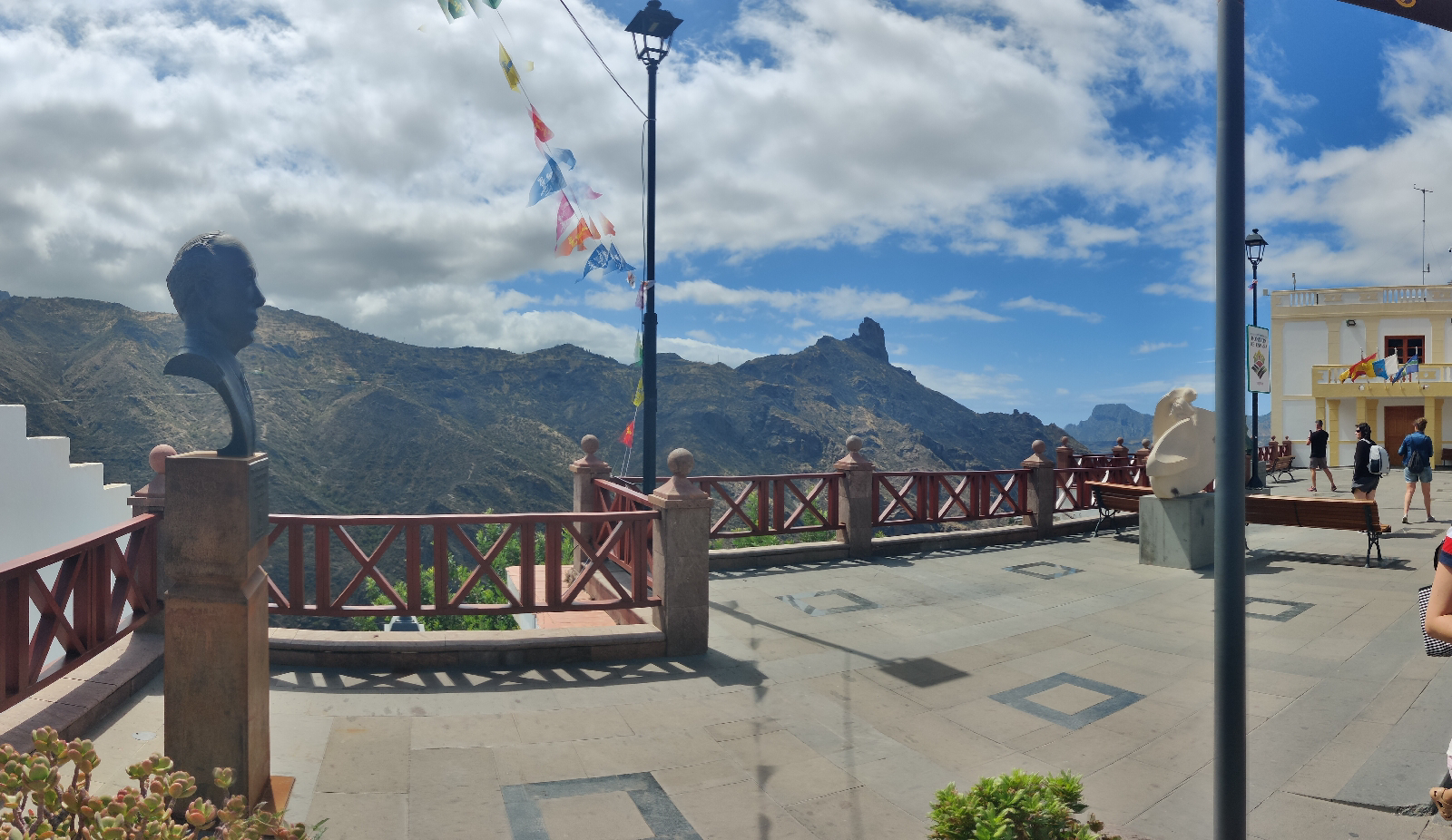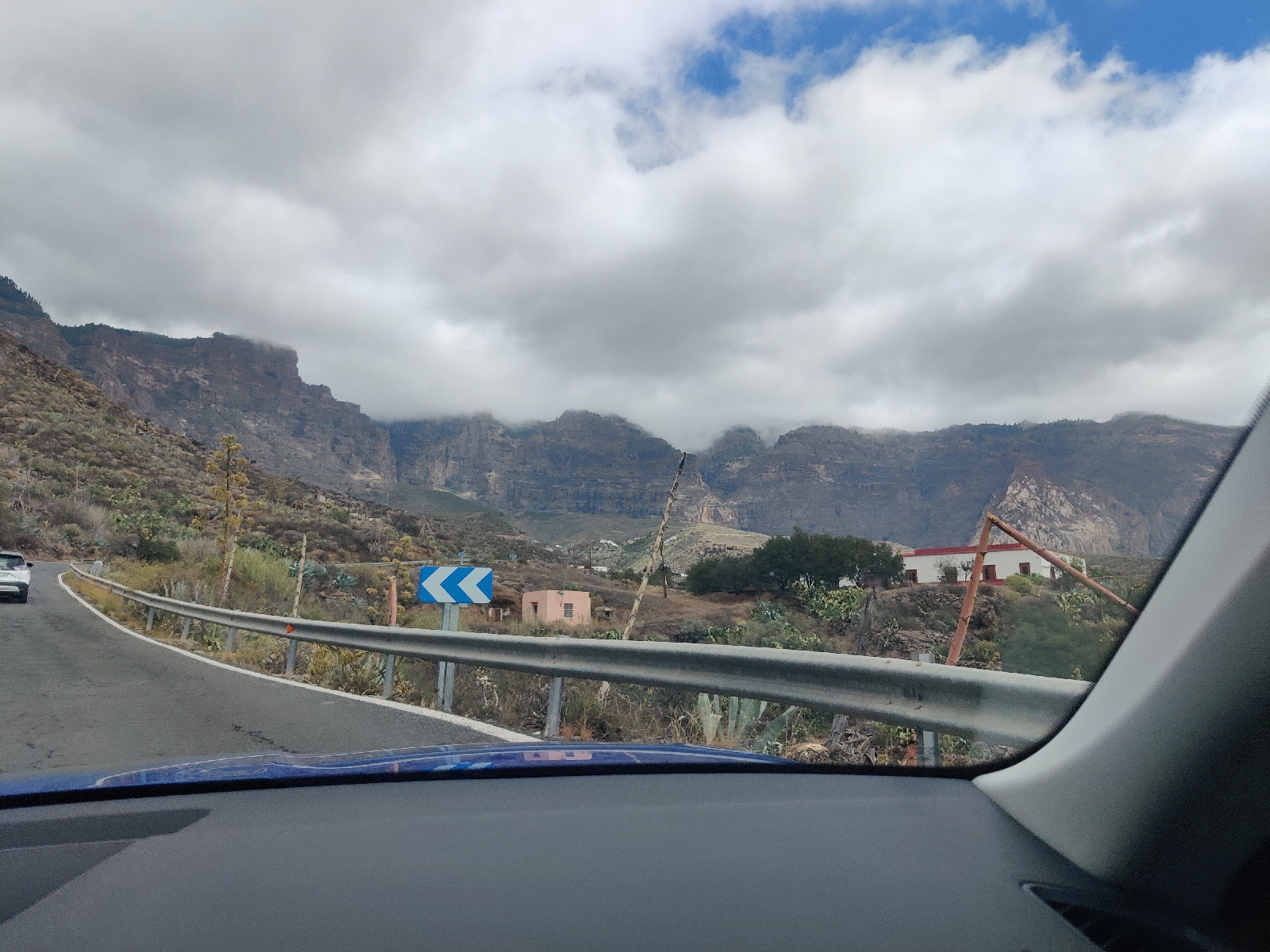So I get back to Pasito Blanco on October 3rd. Mick was due back on the 28th (but subsequently delayed his return to 2nd November) and I really want to visit the Island of La Gomara before my Shengen days expired on 10th of November.
I had three major jobs to complete and a host of smaller ones if we were to be to get soon after Mick's arrival. Of course, as I got stuck into the jobs new ones appeared as if by magic and as it turned out I would be busy working on the boat neary every day for the next four weeks. Not for the first time, the optimistic assessment I gave to Sharon when buying Bonny, "..she's got everthing I need.." seemed so incredibly wide of the mark it's almost unbelievable. I'd spent nearly all my free time over the last 18 months working on her (and Mick has spent lots of his free time on her too) and I dread to think how much money I've spent and yet here we were with only a few weeks to go before pushing off from the Canaries and I still had a full time job of boat maintenance on my hand! And don't forget, we'd already spent a lot of time on maintenace and repairs on the passage thus far. Whatever you do, don't buy a boat!
The big jobs were: fit the new Hydrovane, clean the bottom of the boat and fit the Starlink. Others including making and fitting an additional work top in the very badly designed galley; servicing the main engine, servicing the outboard engine, adding additional solar power and re-filling the propane tank. All these and many others besides are actually buckets of individual tasks that can take ages to complete, that includes tracking down all the tools and materials and parts that are required. If stuff needs to be bought that wipes out a full day. I've actually only spent one day so far on non boat maintenance activities! That was a couple of Sundays ago when I took a walk round the coast to Malpalmas, the big resort area.
The Hydrovane is the wind operated self steering gear. You may remember from previous posts that after repeated attempts to repair the old one that came with the boat, repeated failures finally convinced me to buy a new one. A reliable self steering system is an essential piece of kit for short handed long distance sailing. Bonny has a robust electronic self steering system as well, but relying on that over thousands of miles of ocean passage making would be foolhardy. It also consumes power, which thanks to various improvements already made or in progress, such as the new water heater, water maker, fridge and now Starlink, is becominng an increasingly precious and limited resource. Hence the need for more solar power.
Agustin was once again a life-saver with respect to the Hydrovane. Not only did he take delivery at his home address in his name and with his Canarian Tax ID - which simplified the highly complex Canarian import and customs procedure no end but he spent a day in the sweltering heat helping me remove the old gear and install the new equipment.
On removing the old/ancient gear I discovered two things.
Firstly, it may have been possible to dismantle it sufficiently to replace the old shaft - although in so doing during this operation, I did end up breaking an essential casting! I shied away from attempting this before because of the risks of breaking something and/or being unable to replace hidden parts such as bearings imbedded in the tube. In hindsight however, this is probably something we could have got done in Bouzas. If things had got broken in the process we would have been no worse off! Quite why we did not follow this logic through to that conclusion I don't know. I might have saved myself 4.5K that I could ill afford to spend!
The second thing I discovered was that the gear was in an even worse state than we realised. It turned out that the old shaft, in addition to having a hinge welded on to the bottom - which introduced the weaknesses that caused the repeated failiures - the shaft was also welded together midway along its length. This weld was hidden from view being inside the tube, but it too was a prime candidate for failure.
Anyway, I've now got a new latest model Hydrovane which is both more robust and his some useful refinements built in such as gearing to cope better with different wind strengths and sea states, a more powerful vane and rudder and a remote adjustment system which avoids the neen to lean off the back of the boat to change course - particularly handy in bad weather. I've also got peace of mind. So on balance I think things have probably turned out for the best.
The new Hydrovane has yet to be tested however. That's set for our next passage to La Gomara about 100 miles from here. If further adjustments to the set-up are needed we can make them there.
By the way one of the jobs associated with the main job of installing the new Hydrovane which turned out to be far more time consumig than I had anticipated was fitting the nylon cover to the wind vane frame. It has to be stretched over the frame and lashed tightly to it. This requires soaking it in water and then a few painstaking hours of stretching and lashing. The finished result is shown in the photo below but believe it or not, before one starts the stretching/lashing procedure, the cover only came two thirds of the way down the frame!
The next big job was cleaning the bottom of the boat. I'd reluctantly decided to incur yet further expense and have the boat lifted out of the water to do this and install the Hydrovane. The thought of dropping an essential Hydrovane component to the bottom of the marina or damaging due to the boat surging against the pontoon was two awful to contemplate. I'd also already snorkelled under the boat to examine the extent of the fouling and whilst it didn't look too bad, I was not confident that I still had the stamina to spend hours snorkelling and scraping. The two issues made the decision to haul out a fairly easy one.
The bottom was not badly fouled but it was under attack by the local barnacle strain.
Barnacles between the keel and rudder.
A really stubborn creature that whilst small in size is, once it has taken hold, extremely difficult to get off. I new this from my previous experience with Arctic Smoke when I left her in the Marina here for a year in 2015/16. Her bottom was completely covered by this tenacious creature and it took me days of scraping to clean it off.
Things were nowhere near as bad this time but nevertheless even with the aid of the yard's high pressure washer, it still took be the best part of a day to remove all traces of the pesky stuff. I was absolutely knacked by the time I'd finished and ached all over. It's important to get rid of all of it, not so much because small bits of it will slow the boat down, but because they provide a foundtion for more to attach and so the rate of coverage grows expodentially. The worst affected area was the propeller. It was clear on re-launch that the boat's performance under power was significantly improved.
Next up on the big jobs was the installation of Starlink. There were four main elemets to this. Designing the physical mounting infrstructure, finding the necessary compents, installing them, routing the cables, and connecting to the power supply. I thought the last of these would be the simplest - simply plug it into the boat's existing inverter (that's a box of electronics that turns 12 volts into 230/40 volts which for some bizare reason Starlink requires to run. Given the thing is designed for use by 'campers' you would think it would be a 12 volt system but oh no, 230 volts are needed. This part of the job turned out to be the most troublesome and indeed is not yet completed.
First I figured out the design for mounting the satalite dish. It needed a clear view of the sky at all times. This meant it needed to be relatively high up. It mustn't foul any of the rigging and ideally should not cast any shadow over the solar panel (Mick and I had already removed the wind generator because it was doing just that). I established a location on the port side deck where I thought a pole could be mounted which should then satisfy these requirements except that at some relative angles to the sun, a small shadow would be cast on the top solar panel. It was also too close to a mooring cleat to be ideal but I couldn't come up with anything better.
Next I tackled the cable routing. I established the router could be mounted conveniently next to the inverter and drilled the necessary holes in various bulkheads and spent a sweaty day contorted into uncomfortable positions in small spaces running the cable that connects the router to the satalite dish from the inside of the boat under the cockpit floor and up through the side deck to a position next to where the pole would be mounted. So I drilled a hole in the side deck to run the cable through. The only problem was that after drilling through the deck the drill was still drilling into something substantial. I was completely at a loss to explain what was going on. Eventually the penny dropped, I was drilling into the top of a bulkhead under the deck! So that created a totally unanticipated job - to fill the hole. I put that off untill later and merely taped over the hole. Then I drilled another hole in a better place and led the cable up through it. Eventually I would fit a deck gland through which the cable would pass.
Having completed that job I stood back to take a breather and looked up and .... realised there might well be a better position for the pole - in front of the compass binacle in the centreof the cockpit. In the previous position, the pole could be braced against the solar panel arch metalwork from the back but would require at least one diagonal brace to the deck going forward and would have to do without any additional side to side bracing - not ideal. A pole in front of the binnacle on the other hand could be braced against the binnacle tubes and the solar panel arch tubes with four seperate braces each at roughly 45 degrees to its neighbour. That seemed to me like it would provide a stronger more rigid structure. Another advantage would be it woudbe much easier to remove the dish from the pole. This could be a significant advantage in the event of rough weather - the Starlink fitting I had bought for attaching the dish to a pole was not designed to withstand violent movement and so it would be prudent to be able to remove the dish in the event of bad weather.
After a couple of hours of measuring with a tape measure I had concluded that there was indeed a small sweetspot position for the dish which would not foul any rigging or superstructure and would only cast a small shadow on the solar panel in some orientations. I calculated that I needed a pole of exactly 2 metres in height standing in the middle of the cockpit in front of the compass binnacle on the forward edge of the raised section of cockpit sole to achieve this The dish moves automatically to reach the best alignment with satalites and of course the angle of the sun on the panel will change with course and time of day, so it was difficult to be absolutely precise about the shadow issue. However, having the ability to remove the dish fairly easilly meant that if shadowing did prove to be a problem, the dish could be removed when not in use.
There was only one remaining wrinkle to all this as far as I coud see - the two holes I had just made in the side deck!!
Next up was to figure out how to secure the pole in position. I already knew where I would install the braces, but how and what would they made of? Then I remembered I had retained some lengths of stainless steel tube on board after a previous job, just in case. I had enough to make up each brace but needed a way of attaching each end. The binnacle tubing and the superstructure tubing of the solar panel arch was the same size - 25mm I new I could obtain the necessary fittings in the UK - could I here? Attaching them to the pole of 38mm would be more of a challenge - they might need to be welded - that could be tricky and expensive. I decided on a trip to Las Palmas was required to get the tube - I tracked down a supplier and to see what I could find in the large Chanderly there to address the fixings issues.
Agustin to the rescue once again. He had to make a trip to the sailmaker there and so offered to take me; we stopped off to refill my empty gas cylinder on the way. There's only one place on the island that will do it!
After buying the pole and an appropriate deck fitting we headed for the Chanderlry. I quickly found they had the end fittings for connecting with the tubular braces to the other 25mm tubes but I couldn't immediatately find anything suitable for them to the pole. Unfortunately Agustin had left his phone behind and was expecting an important call later so we left with a potential solution begining to form in my head.
The next day I hunted through my various boxes of 'just in case' spares and found two flaat section flexible stainless steel U-clamps for securing pipework which looked like they would fit snugly around the pole. The end had holes that would take the 25mm eye fittings. I used jubilee clips to secure them to the pole and then set about cutting my tubing to the required length and by the end of the day had the pole securely fitted with the dish fitted on top and connected to the cable. Then I realised that I could still use the second hole in the deck for the cable - in fact by a pure fluke it was in just about the ideal place - I fastned the cable to the solar panel superstructure tubing and the hole in the deck was close by its base!
I was feeling pretty pleased with myself - no welding necessary. I did think something more robust than the jubilee clips and flexible clamps was needed and so the next day I headed back to the Chanderly on the bus. I found some stronger tube clamps (and met up with fellow OCC member John Passmore of 'Old Man Sailing' fame, who survived a knock down in his Rival 32 en route to Las Palmas.
The next day after reaming out the eyes in the end fittings I finally finished the installation of the new physical superstructure.
All I had to do now was plug in the router to the inverter and hey presto I would have my own satalite internet connection. The only problem was I didn't. The little light on the bottom of the router winked seductively at me but no internet connection was forthcoming - as far as I coud make out the whole system was dead!
After ploughing through Starlink's troubleshooting reources on line on the very flaky local wifi I finally discovered that that little light should not be winking - a solid light indicates all OK - winking is not mentioned but it seemed pretty clear it should not wink. I didn't understand it. There was clearly power there and the inverter produced more than enough power to drive the 4 Amp Starlink.
There was only one other thing I could try - the boat's second 2000 Watt inverter but which is not cabled in to the boat's wiring system. So I set about lashing up a connection. It took a few hours but - hey presto it all worked. I was also amazed at how little current the Starlink seemed to be consuming so I just left it on. I was able to watch the world cup Rugby and everything.
The following night I was getting into bed when an alarm sounded from the main cabin. It was coming from the inverter. I turned it off scratching my head and glanced at the bettery monitor - the batteries were at 85% a little lower than normal for that time of day but fine. But wait a minute the voltage was only 10.9 not the 13.4 or thereabouts that it should be. This was impossible how could this be? I disconnected all the major utilities and ran the engine for a couple of hours to get the voltage up to 12 and the next day consulted Mick.
He was not at all happy that I had messed about with the electrics and quickly figured out that when I connnected up the big inverter I accidently by-passed the battery monitor. Result - Amps disappearing at a rate of knots but completely undedected. It tuned out that the inverter was gobbling up 4 Amps as soon as it was switched on and that Starlink was indeed also consumig the 4 Amps quoted.
Feeling pretty bloody stupid I sorted out the wiring and recharged the batteries which thankfully seem none the worse for wear. Thank goodness for Lithium Batteries!
Since then I've prepped as much as possible for the installation of a new solar panel which I'll get on Thursday - once again thanks to a lift from Agustin. We'll pick up Mick from the Airport too.
Agustin and Sonja threw the most fabulous party for OCC members last Saturday - I don't know how he does it!
My pal Howard is also due to spend a few days with us from Sunday. The plan is to undertake a sail to La Gomara early next week to test out the Hydrovane befor departing for Cape Verde or Barbados.
Stay tuned!


